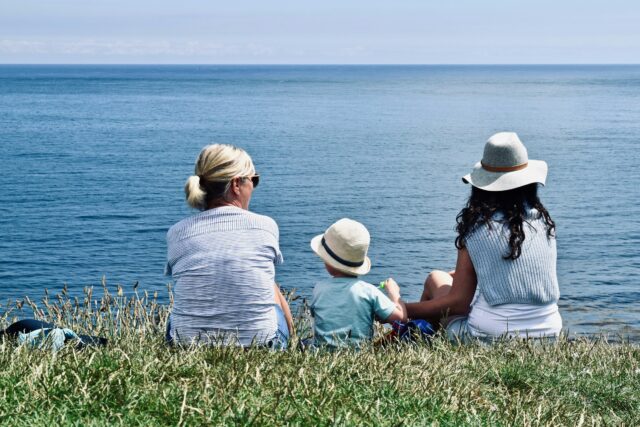Unmasking Loneliness: How Understanding Its Source Can Lead To Healing
By: Demet Çek, Ph.D. | October 6, 2023

If you feel lonely, you are not alone. It’s ironic and it’s true. Rates of loneliness are increasing in many parts of the world. We are “connected” digitally but not as available to each other otherwise. U.S. Surgeon General Dr. Vivek Murthy’s 2023 report entitled “Our Epidemic of Loneliness and Isolation” highlights the extent to which loneliness has a profound effect on our mental and physical wellbeing. In this report, he declares loneliness a new public health epidemic in the United States. Loneliness is associated with increased rates of depression, anxiety, weakened immune system, heart disease, and even mortality.
A Call to Action
As research continues to demonstrate the importance of social connection and shows us just how detrimental loneliness can be, the importance of speaking out – and changing our habits, becomes of the utmost importance.
“Given the significant health consequences of loneliness and isolation, we must prioritize building social connection the same way we have prioritized other critical public health issues such as tobacco, obesity, and substance use disorders. Together, we can build a country that’s healthier, more resilient, less lonely, and more connected.” – Dr. Vivek Murthy, U.S. Surgeon General
Who is Affected?
While loneliness affects people of all backgrounds and socioeconomic status, some groups are more prone to feeling lonely than others. Single or divorced individuals, elderly, people with chronic illnesses or disabilities, young adults, caregivers, and LGBTQ+ are among the most affected groups. Men are lonelier than women. Heavy users of social media are lonelier compared to light users.
The Surgeon General’s report underlines the research from the past five years – before, and after the COVID-19 pandemic, revealing that one in every two adults in the U.S. report experiencing loneliness.
I see this in my practice every day. Regardless of the reason for seeking therapy, most clients share feelings of loneliness at one point or another. Among other reasons, people feel lonely due to a lack of quality relationships, social isolation, transitions, and loss. Loneliness is sometimes a result of psychological distress, and other times a contributor to it.
Loneliness is a key reason for clinging to unworkable behaviors, such as seeking approval, status, or recognition, staying in dysfunctional relationships, practicing excessive control, and engaging in addictive behaviors.
Where Do We Begin?
You can start by understanding your loneliness more in depth. Ask yourself the following questions from the UCLA 3-item Loneliness Scale.
- How often do you feel that you lack companionship?
- How often do you feel left out?
- How often do you feel isolated from others?
The good news is there is a lot you can do to change the negative impact of loneliness in your life.
Understanding the kinds of connections that you long for can help you identify the steps you need to take.
The Three Dimensions of Loneliness
The questions from the UCLA Loneliness Scale above measure the three dimensions of loneliness: relational loneliness, social loneliness, and emotional loneliness.
Relational loneliness: The gap between the types of relationships you desire, and what you have.
For example, if you long for a confidant but do not have one, if you want a romantic partner but do not have one. Relational loneliness is about the specific roles or functions that are missing in our social and emotional life.
To increase your relational connectedness, widen your social network. Attend social events, join clubs, take up a new hobby, volunteer, or learn a new skill. Turn coworkers into friends. Connect with friends of friends. Reflect on your relationship values through journaling and practice the values that you want to embody in your desired relationships in your existing ones. For instance, be an active listener and stay present. Be reliable, supportive, and communicative. Show appreciation and gratitude.
Social loneliness: The discrepancy between desired and actual social relationships. When we feel alone and lack a sufficient quantity or quality of social connections.
This oftentimes looks like lack of companionship. It includes objective aspects of a person’s social network, such as the number of friends, family members, and acquaintances.
To increase your social connectedness, join clubs, classes, or communities that share your interests, volunteer to make a positive impact, and engage in your hobbies with others.
Emotional loneliness: This means an absence of close, intimate, meaningful emotional bonds, or a lack of an emotional connection and quality in existing relationships.
To increase your emotional connections, avoid avoiding. Engage in the activities suggested above to improve social and relational connectedness. Challenge yourself to get out of your comfort zone and share more about yourself with trustworthy individuals and show interest in their emotional lives. Reconnect with old friends, visit with existing friends more often, and change how, and how often, you communicate with others. If you e-mail, considering texting. If you text, call instead. If you call, jump on a video call, or meet in-person. If you communicate every other week, take the initiative to do it weekly. Remember that no single relationship can fulfill all your needs entirely. Identifying what you need (the other person listens to you nonjudgmentally, responds promptly, assists you during a difficult period, etc.) and understanding what the other person needs will allow you to evaluate if the relationship is a good fit.
Small Steps Add Up to Big Results
“Each of us can start now, in our own lives, by strengthening our connections and relationships. Our individual relationships are an untapped resource…Answer that phone call from a friend. Make time to share a meal. Listen without the distraction of your phone. Perform an act of service. Express yourself authentically. The keys to human connection are simple, but extraordinarily powerful.” – Dr. Vivek Murthy, U.S. Surgeon General
Sometimes we know what’s needed to reduce loneliness, but we don’t do it. If you experience barriers that keep you from taking action in order to live a more connected and enriched life, reach out to your San Diego psychologist at Therapy Changes. Together, you and a talented member of our team will explore the obstacles in your way and determine a path forward.
Contact Us now to learn How Therapy Works and What to Expect and schedule an initial appointment. We know it’s not easy taking the first step and we honor the courage it takes to do so. You don’t have to suffer in silence; help is available, and you are not alone.
References:
Bruce L. D., Wu J. S., Lustig S. L., Russell D. W., Nemecek D.A. (2019) Loneliness in the United States: A 2018 National Panel Survey of Demographic, Structural, Cognitive, and Behavioral Characteristics. American Journal of Health Promotion, 33(8), 1123-1133.
Cigna Corporation. The Loneliness Epidemic Persists: A PostPandemic Look at the State of Loneliness among U.S. Adults. 2021.
Hughes, M. E., Waite, L. J., Hawkley, L. C. and Cacioppo, J. T. (2004). A Short Scale for Measuring Loneliness in Large Surveys: Results from two population-based studies. Research on Ageing, 26 (6), 665-672.
Russell, D. (1996). UCLA Loneliness Scale (Version 3): Reliability, validity, and factor structure. Journal of Personality Assessment, 66, 20-40.
Photo by Brooke Cagle on Unsplash



